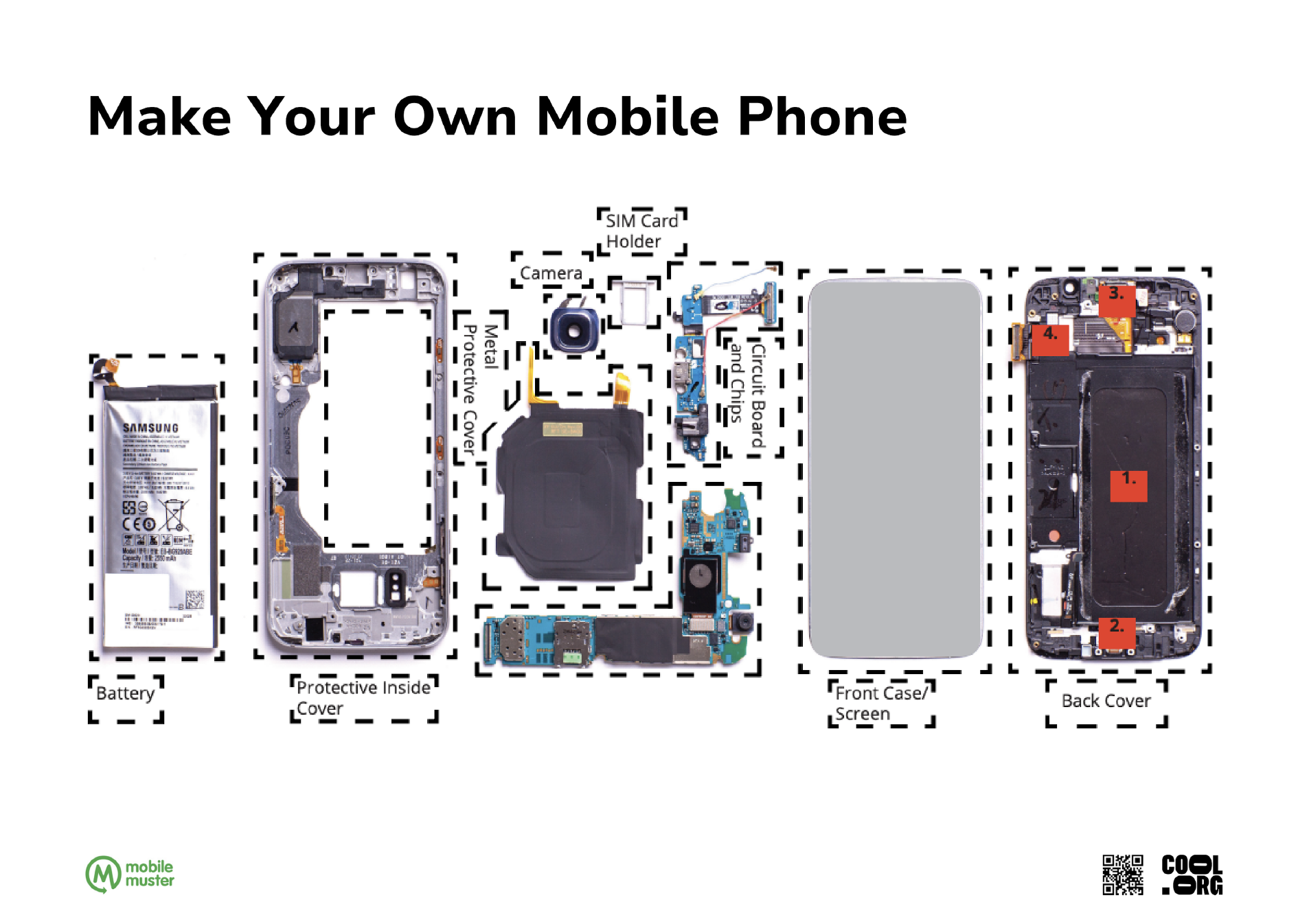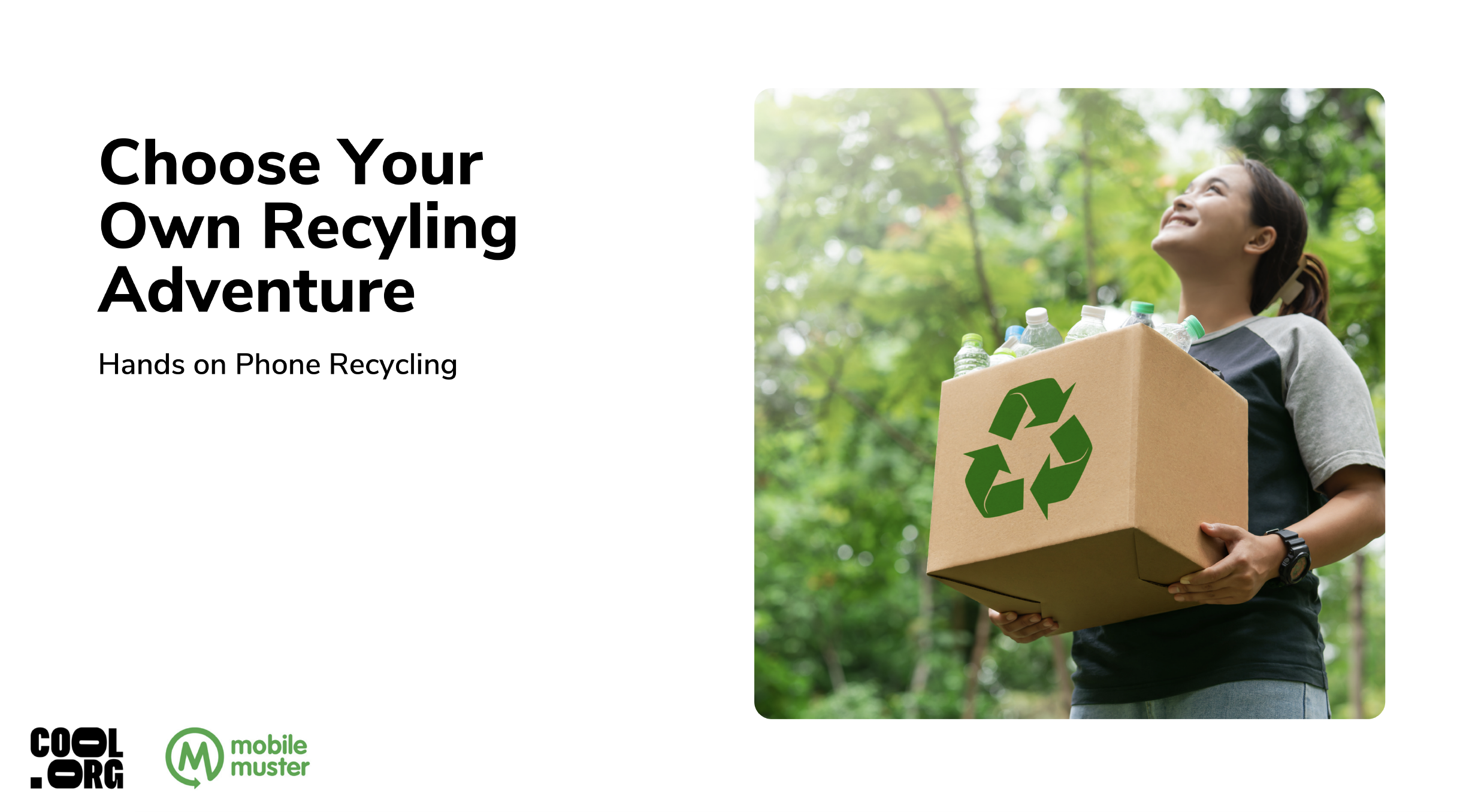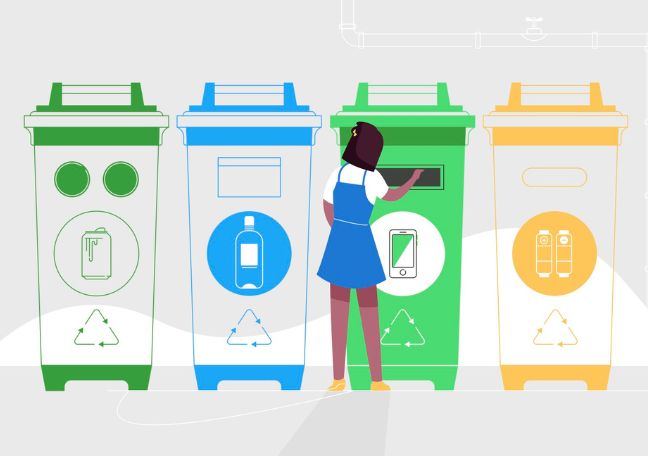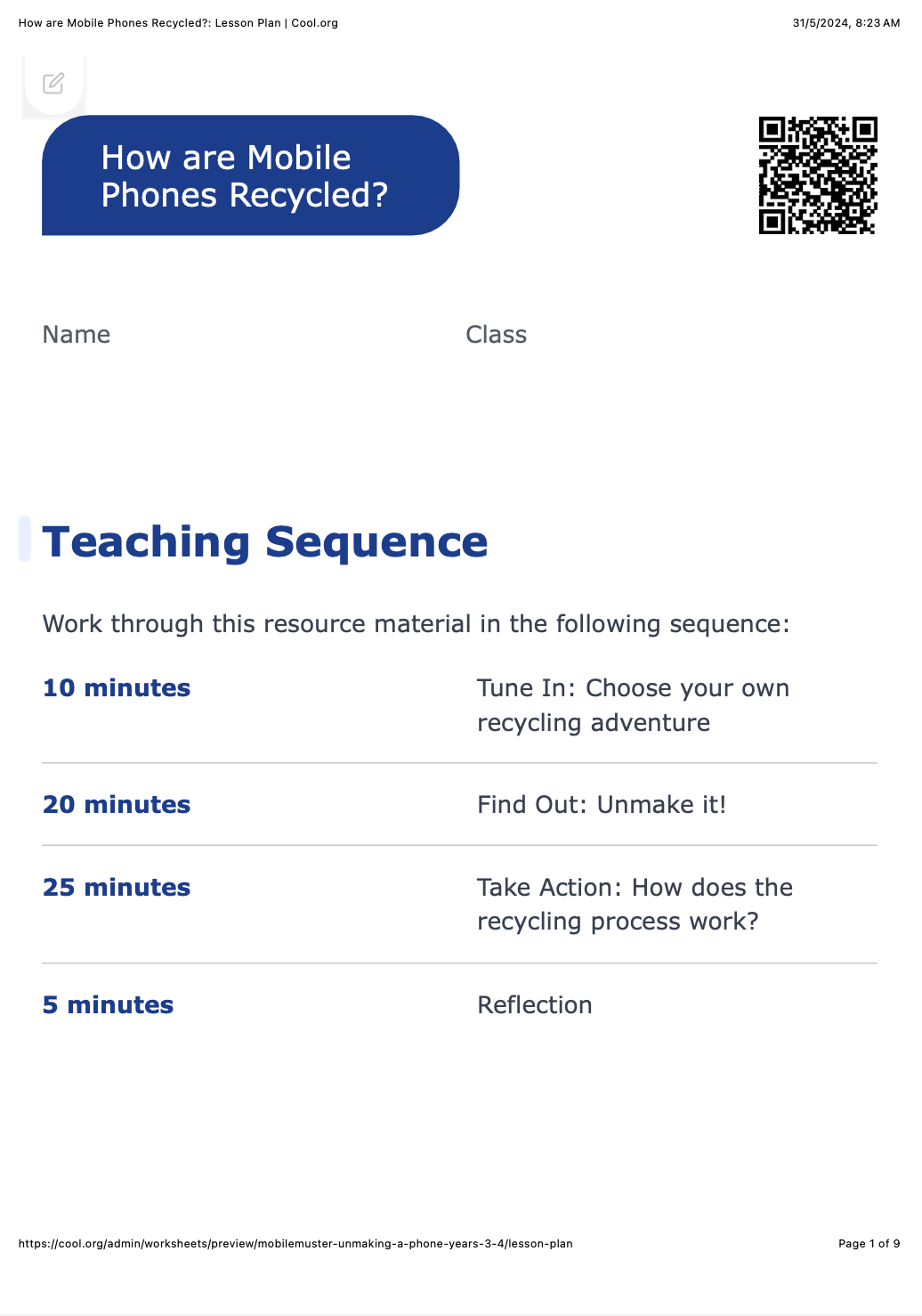Lesson summary
In this lesson, students complete a ‘Choose Your Own Recycling Adventure’ activity to investigate the impact mobile phones have on the environment. They will journey through purchasing and disposal scenarios to learn what happens when you use, upgrade, reuse or recycle a mobile phone. The students will then investigate the recycling process through a hands-on dismantling and sorting activity.
Learning intentions:
Students will...
- understand the lifecycle of mobile phones, including their disposal and recycling
- explore the environmental impact and benefits of proper recycling practices.
Success criteria:
Students can...
- evaluate the advantages and disadvantages of the lifecycle of mobile phones and their production, consumption and disposal
- identify the benefits of using, reusing and recycling mobile phones
- outline the importance of specific recycling practices for mobile phones.
Lesson guides and printables


Curriculum links
Select your curriculum from the options below.
Lesson details
Skills
This lesson is designed to build students’ competencies in the following skills:
- collaboration
- communication
- ethical understanding
- global citizenship
- problem-solving
Curriculum mapping
Australian Curriculum (v9.0) content descriptions
Years 3 & 4 Design and Technologies:
- examine design and technologies occupations and factors including sustainability that impact on the design of products, services and environments to meet community needs (AC9TDE4K01)
- describe how forces and the properties of materials affect function in a product or system. (AC9TDE4K02)
Year 4 Humanities and Social Sciences:
- sustainable use and management of renewable and non-renewable resources, including the custodial responsibility First Nations Australians have for Country/Place. (AC9HS4K06)
Year 4 Science:
- examine the properties of natural and made materials including fibres, metals, glass and plastics and consider how these properties influence their use. (AC9S4U04)
Relevant parts of achievement standards:
Years 3 & 4 Design and Technologies:
- students can describe how people design products, services and environments to meet the needs of people, including sustainability.
Year 4 Humanities and Social Sciences:
- Students describe the importance of environments, and sustainable allocation and management of resources.
Year 4 Science:
- Students can relate the uses of materials to their properties.
NSW Syllabus outcomes: ST2-11LW, ST2-14BE, ST2-15I, ST2-16P, GE2-2, GE2-3, GE2-3, ST2-13MW
General capabilities: Critical and Creative Thinking, Personal and Social Capability
Cross-curriculum priority: Sustainability
Level of teacher scaffolding: Medium – provide direction and facilitate class discussion.
UN Sustainable Development Goals
UN SDG 12: Ensure sustainable consumption and production patterns
- Target 12.5: By 2030, substantially reduce waste generation through prevention, reduction, recycling and reuse.
Resources required
- Class set of ‘Make Your Own Mobile Phone Worksheet’
- Device capable of presenting audiovisual material
- Sticky notes/scrap paper
Additional Info
This lesson has been developed as part of Planet Ark’s National Recycling Week. Following this lesson plan is an ideal way for your school to take part in MobileMuster. You’ll be joining thousands of amazing teachers in making a difference and creating positive environmental change. Take part in the Schools Recycling Right Challenge for Planet Ark’s National Recycling Week. Register your lesson or other activities today!
Related Professional Learning
How to Teach Sustainability with Hope
Quick Summary: This course is for both primary and secondary teachers of all subjects, but especially for English, Science, Humanities and Geography teachers who are covering climate change and the cross-curriculum priority of sustainability.



Welcome back!
Don't have an account yet?
Log in with:
Create your free Cool.org account.
Many of our resources are free, with an option to upgrade to Cool+ for premium content.
Already have an account?
Sign up with:
By signing up you accept Cool.org's Terms and Conditions(Opens in new tab) and Privacy Policy(Opens in new tab).